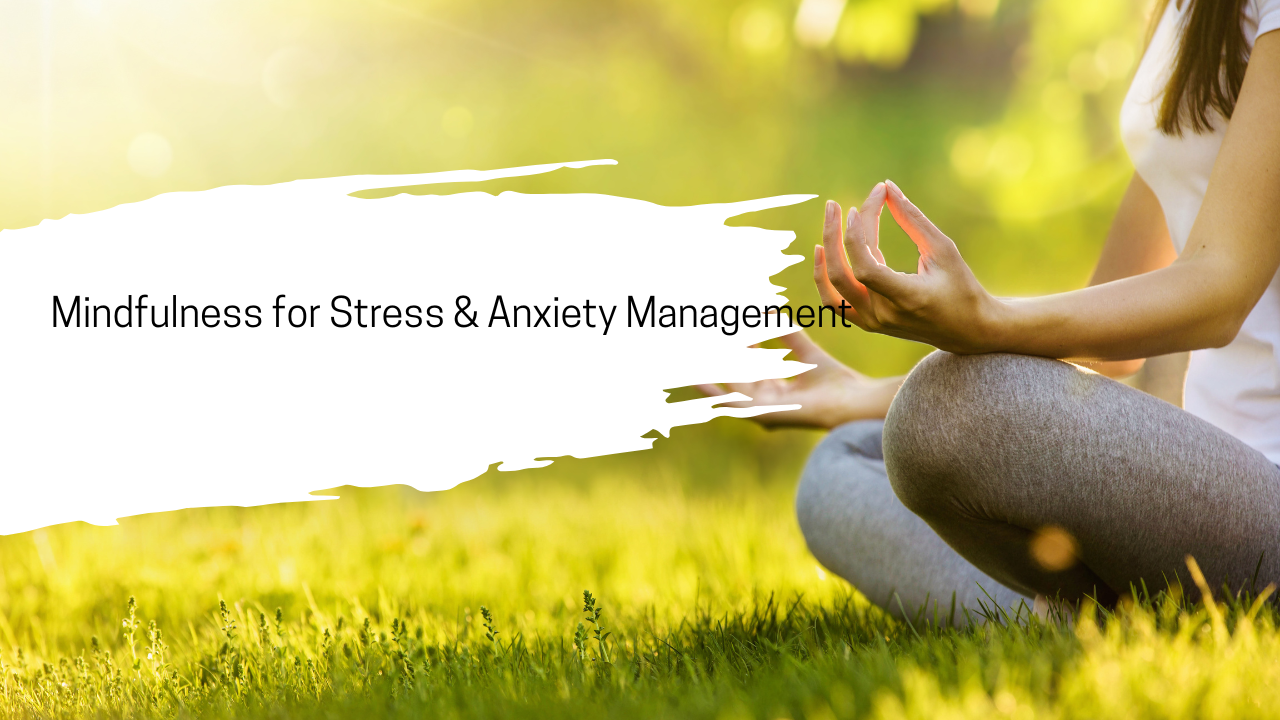Mindfulness for Stress & Anxiety Management
In a world that often feels overwhelming, managing stress and anxiety can be a daily challenge. While these feelings are a normal part of life, when they become chronic, they can take a significant toll on your mental and physical health. The good news is that you have a powerful tool at your disposal: mindfulness. This practice isn’t just about finding a moment of calm—it’s about fundamentally changing your relationship with stressful thoughts and anxious feelings.
Understanding the Connection
Stress and anxiety often stem from our thoughts about the past or worries about the future. We get caught in a cycle of “what if” scenarios, reliving past events, and anticipating future problems. This mental time travel prevents us from being present and can trigger our body’s stress response.
Mindfulness helps us break this cycle by teaching us to stay anchored in the here and now. By observing our thoughts and feelings without judgment, we can begin to see them for what they are—just thoughts and feelings, not absolute truths. This simple shift in perspective can create a powerful buffer against the cascade of stress and anxiety.
Practical Mindfulness Techniques
Here are a few simple exercises you can use to manage stress and anxiety in the moment.
The 3-Minute Breathing Space
This exercise is designed to be used when you feel overwhelmed.
- Step 1: Awareness. Take a moment to check in with yourself. Acknowledge what’s happening. What thoughts are you having? How are you feeling emotionally? Where do you feel these sensations in your body?
- Step 2: Gathering. Gently guide your attention to the sensation of breathing. Focus on the rise and fall of your abdomen or the feeling of air moving in and out of your nostrils. Let your breath be an anchor, grounding you in the present moment.
- Step 3: Expanding. Expand your awareness from your breath to your entire body. Notice any sensations you feel—the pressure of your feet on the floor, the weight of your clothes on your skin, or the temperature of the air. Acknowledge these sensations without trying to change them.
Mindful Walking
Mindful walking can be a powerful way to relieve anxious energy. Instead of rushing from one place to another, try to be fully present with each step. Notice the feeling of your foot lifting and then placing itself back down on the ground. Pay attention to the rhythm of your body’s movement and the sights and sounds around you.
Body Scan Meditation
This practice involves systematically bringing your attention to different parts of your body. You can do this lying down or sitting comfortably. Start with your toes and slowly move your focus up through your body, noticing any sensations you feel. This helps you reconnect with your physical self and can release built-up tension.
The Long-Term Benefits
Consistent mindfulness practice trains your brain to be less reactive to stress. It strengthens the neural pathways associated with calm and focus and can even change the structure of your brain over time. By regularly dedicating a few minutes to being present, you can build resilience and find a greater sense of peace and well-being.







